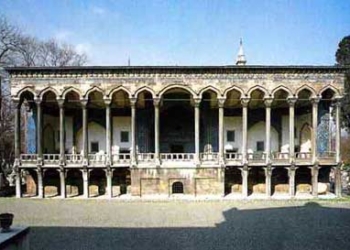Switzerland Unveils Its Latest Renewable Energy Project: A Massive Water Battery System.
According to CNN, operational since last month, the water battery, known as Nant de Drance, is a pumped-storage hydroelectric power plant capable of storing energy equivalent to 400,000 electric car batteries.

The variable-speed turbines of Nant de Drance. (Photo: CNN)
Robert Gleitz, a board member of Nant de Drance, stated: “Located in the Swiss Alps, the plant features flexible turbines that can reverse direction. With just a flip of a switch, we can transition from energy storage to power supply.“
This monumental project took 14 years to complete. Approximately 17 kilometers of tunnels were excavated through the Alps. Six turbines are situated 600 meters underground in a cavern as long as two football fields.
Nant de Drance utilized two existing reservoirs, raising the upper reservoir by 21.5 meters to double its capacity. This reservoir holds more water than 6,500 Olympic-sized swimming pools.
As one of the largest facilities of its kind, the Nant de Drance project is valued at $2 billion and could play a crucial role in stabilizing Europe’s power grid as the continent transitions to renewable energy.
Pumped-storage hydroelectric plants have been around for over a century and are particularly important for renewable energy because wind and solar power are heavily dependent on weather conditions and do not provide a continuous power supply.
Gleitz remarked: “We can draw energy from the grid when there is excess and feed it back when needed.”

The six turbines are powered by water flowing down a steel pipe taller than the Eiffel Tower. (Photo: CNN)
Pascal Radue, CEO of GE Renewable Energy Hydro, the equipment supplier for Nant de Drance, said: “Unlike many previous plants, Nant de Drance uses variable-speed pump-turbines. These turbines help stabilize the power grid.”
Radue explained: “With a fixed-speed turbine, we must wait for the power plant to operate at the exact speed to synchronize with the grid. This wastes time and energy. Variable-speed turbines provide power to the grid instantly, reducing the risk of outages.”
Historically, pumped-storage plants have been built on river systems and require dam construction, disrupting wildlife and destroying ecosystems. In Switzerland, where the first pumped-storage hydroelectric plant was built in 1890, nearly half of the total river length has been altered by human activity, leaving very few rivers in their natural state.
According to Andrew Blakers, an engineering professor at the Australian National University, this is why modern projects like Nant de Drance prioritize closed systems that do not impact river systems.

The turbines are housed in a cavern as long as two football fields. (Photo: CNN)
Blakers stated: “The era of dam construction is nearing its end. These closed power plants occupy relatively small spaces compared to the level of energy security they provide.” He estimates that to power a city of one million people for 24 hours, approximately 2 square kilometers of flooded land would be needed, adding that pumped-storage hydroelectric power offers one of the most efficient energy storage solutions available.
Nant de Drance feeds about 80% of its electricity into the grid and stores around 20 hours of backup energy.
With hopes of becoming the first carbon-neutral continent, Europe has ambitious goals for renewable energy. In 2020, just over one-fifth of the continent’s total energy came from renewable sources, but in May of this year, the European Commission raised its renewable energy target for 2030 from 40% to 45%.
Blakers noted that achieving this will require new storage facilities with high capacity. The European Association for Energy Storage estimates that the continent will need 200 gigawatts of storage by 2030—four times its current capacity. In the decade from 2010 to 2020, only 8 gigawatts of storage were added to the grid.
This is why Nant de Drance is so critical. Rebecca Ellis, energy policy manager at the International Hydropower Association, believes that due to its geographical centrality in Europe, Switzerland can help stabilize the grid across the continent. However, as the country is not a member of the European Union, regulations pose a barrier.
Pumped-storage hydroelectric power can ensure energy security beyond Europe. Blakers’ team has identified around 600,000 potential sites for closed systems, although only 1% of these would be needed to meet global energy storage demand.
As the climate crisis escalates, Gleitz hopes that Europe will harness the potential of the clean energy reservoir that pumped-storage hydroelectric plants like Nant de Drance offer. He stated: “If we want to move towards clean energy, then Nant de Drance is one of the stepping stones on that path.”





















































